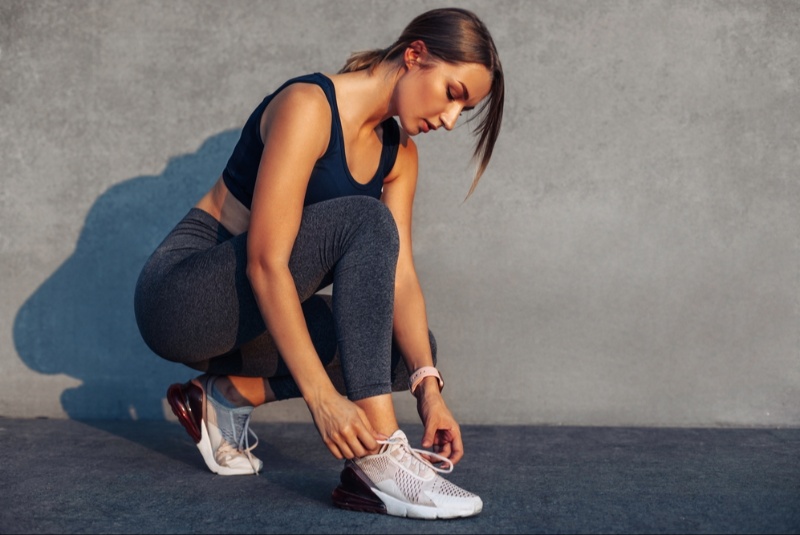In the current sports footwear landscape, the sheer volume of options can be overwhelming. For the savvy shopper, making smart purchases isn’t just about snagging the latest deals; it’s a sophisticated dance of understanding one's needs, doing thorough research, and recognizing that the right pair of shoes can make all the difference in athletic performance and comfort. This guide is designed to walk you through the essential steps to ensure your sports footwear investments are both wise and satisfying.
Understanding Your Foot and Your Sport
Before diving into the colorful sea of sports footwear, begin with a self-assessment. Sports shoes are designed with specific activities in mind, and choosing the wrong type can lead to discomfort or injury. Runners have different needs than basketball players, and within those categories are subcategories that cater to different styles (like sprinting vs. long-distance running).
Your foot type also plays a pivotal role. The three main foot types – pronated, supinated, and neutral – each have particular requirements for support and cushioning. A visit to a podiatrist or a specialty sports store for a gait analysis can save you from future pain and wasted investment.
Prioritize Function Over Fashion
It's easy to be swayed by the latest trendy designs or the endorsements of high-profile athletes. However, the savvy shopper knows that function should be the top priority. Here's what to consider:
1. Cushioning
Proper cushioning is essential to absorb the impact while running or jumping. Each sport has its own cushioning demands, so understand the level of shock absorption you need based on your chosen activity.
2. Support
From the arch to the ankles, support is crucial to prevent injuries. Basketball shoes tend to have higher cuts to support the ankle during sudden changes in direction, while running shoes focus on arch support to prevent overpronation or supination.
3. Sole Durability
The playing surface matters. Shoes designed for indoor use will wear out quickly on rough outdoor surfaces. The outsole should provide sufficient grip and be made of a material that can withstand your typical playing terrain.
4. Breathability
Ventilation prevents overheating and reduces the likelihood of fungal infections. Mesh panels are common in many sports shoes for this reason.
5. Weight
Lightweight shoes can enhance performance, but they shouldn’t sacrifice necessary support and durability. Strike a balance between the lightest shoe and one that can still stand up to the rigors of your activity.
Do Your Research
Armed with knowledge about your needs, turn to research. Read reviews, watch video breakdowns, and ask for recommendations from experienced athletes in your sport. Brands often have signature technologies that cater to specific requirements, so understand the lingo and how it translates to real-world application.
Technology and Trends
Manufacturers are in constant competition to innovate, resulting in an ever-evolving market of footwear technology. Be aware that not all innovations align with every athlete's needs. Adidas' Boost technology, for instance, offers exceptional energy return, which is great for runners but may not be as crucial for weightlifters.
The Reputation of Brands
While brand isn't everything, certain brands have carved out reputations for excellence in specific sports. For instance, Asics and Brooks are well-regarded in the running community, whereas Nike and Adidas dominate in both running and basketball.
Price vs. Quality
An expensive price tag doesn't always equate to higher quality, and conversely, a lower-cost shoe isn’t inherently inferior. Look for reviews that compare longevity and performance, as these will give you a better indication of value for money.

Where to Shop
Shopping for sports shoes can be done in brick-and-mortar stores or online, each with its own advantages.
In-Store
In-store shopping allows you to try on different pairs, feel the materials, test the support, and ask staff for advice. Staff expertise can be invaluable, and many sports stores now offer treadmills and fitting technology to help you make the best choice.
Online
Online stores often have a wider selection and better deals. Look for retailers with a good return policy, and take advantage of online communities and reviews. Make sure to measure your foot correctly if ordering online, as sizing can vary between brands and even between models within the same brand.
Timing Your Purchase
Timing can be everything. New models are usually released at the beginning of the year or the start of a sports season, which means older models go on sale. These older models are often just as good as the latest releases, especially if there hasn't been a significant technological advancement.
Additionally, taking advantage of off-season sales can save you a substantial amount of money. For example, buying basketball shoes in the summer or running shoes in the winter can often lead to discounts.
The Lifecycle of Your Shoes
Even the best shoes have a lifespan. For running shoes, a common recommendation is to replace them every 300 to 500 miles. Pay attention to the signs of wear and tear such as a flattened midsole, stretched out uppers, or worn-down treads.
To extend the life of your shoes, use them only for their intended purpose. Running in your basketball shoes or vice versa accelerates wear and diminishes the shoe's effectiveness.
Sustainability Considerations
As an informed shopper, it’s also important to consider the environmental impact of your footwear. Many companies now offer options made from recycled materials or have programs for recycling old shoes. Choosing a sustainable option can be a smart purchase in more ways than one.
The Right Fit
Ultimately, the right fit isn't just about size; it's about how the shoe complements your foot shape, your sport, and your individual needs. When trying on shoes, wear the socks you'd typically use for that sport, and try to go shopping in the afternoon or evening when your feet are at their largest.
The Return on Investment
Sports footwear should be seen as an investment in your health and performance. A smart purchase can prevent injuries, enhance comfort, and improve your overall athletic experience.
The savvy shopper’s approach to sports footwear should be a meticulous one. From understanding personal and sport-specific needs, prioritizing function over fashion, conducting thorough research, knowing where and when to shop, recognizing the lifecycle of sports footwear, to considering sustainability — each step is crucial in making a wise purchase. By following this guide, your next pair of sports shoes will not only be a smart choice but a stride in the right direction for your athletic endeavors.




